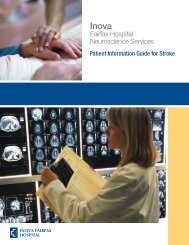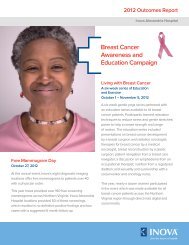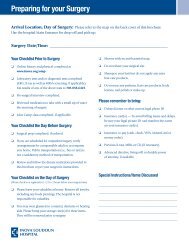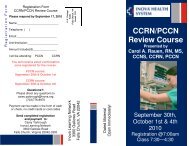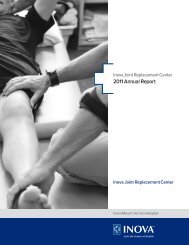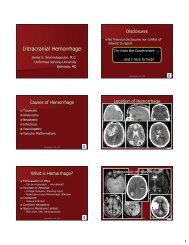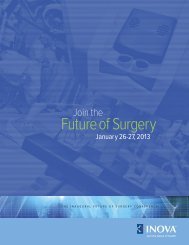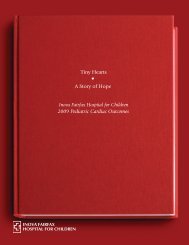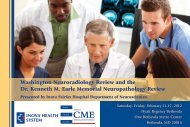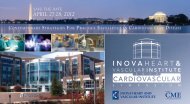Fungal and Parasitic Infections of the CNS - Inova Health System
Fungal and Parasitic Infections of the CNS - Inova Health System
Fungal and Parasitic Infections of the CNS - Inova Health System
You also want an ePaper? Increase the reach of your titles
YUMPU automatically turns print PDFs into web optimized ePapers that Google loves.
Aspergillus look-alikes<br />
• Cannot distinguish different Aspergillus species<br />
members<br />
• Pseudoallescheria boydii (Scedosporium<br />
apiospermum), Scedosporium inflatum,<br />
Chaetomium sp. are look-alikes<br />
– rarer than Aspergillus infections in <strong>the</strong> <strong>CNS</strong><br />
– indistinguishable clinically <strong>and</strong> pathologically<br />
– Proven by culture methods only<br />
– almost exclusively OPPORTUNISTIC infections<br />
Fusarium infections <strong>of</strong> <strong>CNS</strong><br />
• Ano<strong>the</strong>r Aspergillus look-alike<br />
• Epidemiology: soil<br />
saphrophyte<br />
• PATHOGENIC infection best<br />
documented in contact lens<br />
wearers<br />
• Rare <strong>CNS</strong>/ disseminated<br />
infections exclusively<br />
OPPORTUNISTIC<br />
• Morphology:<br />
– hyphal<br />
Zygomyces sp.<br />
• Almost exclusively OPPORTUNISTIC infection<br />
in <strong>CNS</strong><br />
• Epidemiology: classic emphasis on diabetic<br />
ketoacidosis, but also o<strong>the</strong>r acidotic or<br />
immunocompromised patients<br />
• Rhizopus>>>Mucor>>>>>>Absidia<br />
• Infection usually due to direct extension from<br />
infected nasal or paranasal infections, via <strong>the</strong><br />
orbit, NOT pulmonary infection<br />
13




